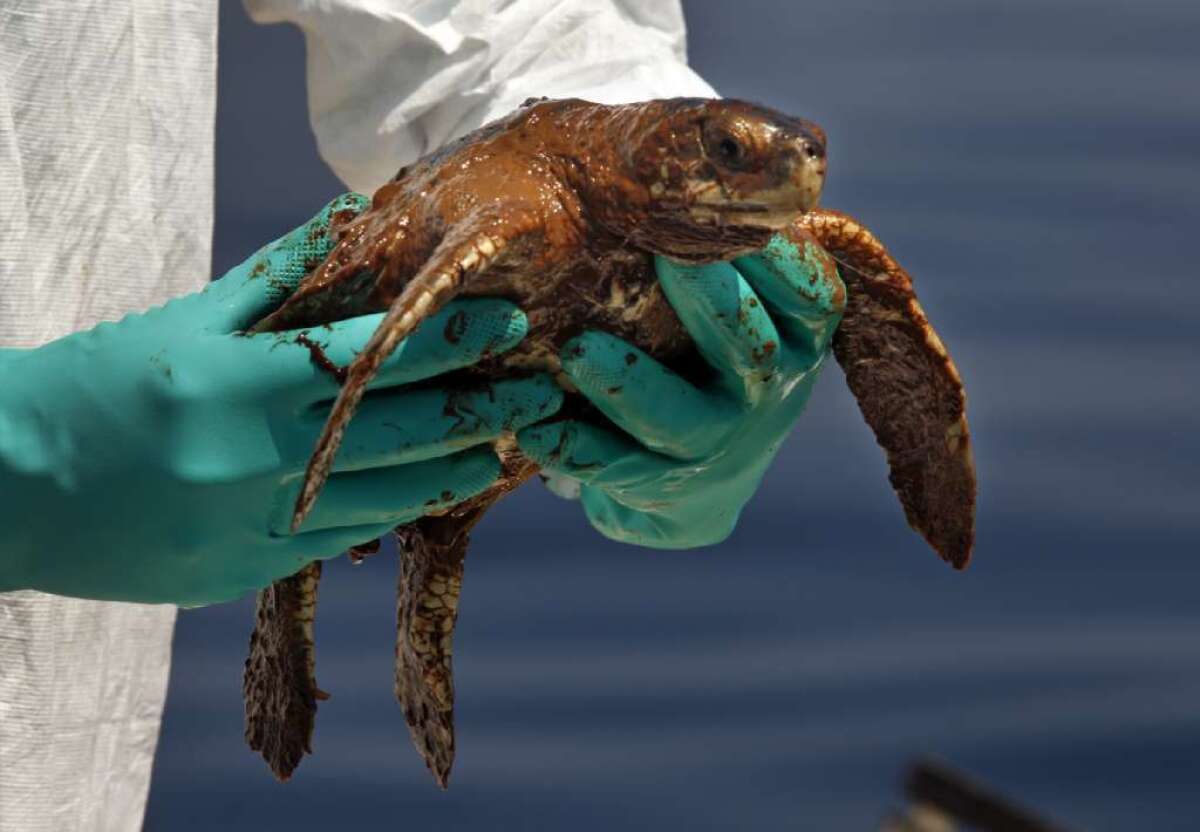Endangered sea turtles in harm’s way in Gulf of Mexico

Federal scientists for the first time have mapped the migration patterns and feeding grounds of Kemp’s ridley sea turtle in the Gulf of Mexico, and the study reveals that the favored feeding sites for the endangered turtles overlap with the most-damaged areas of the gulf.
Researchers with the National Park Service and the U.S. Geological Survey found that the small turtles predominantly forage in waters where there is extensive commercial fishing, frequent oil spills and a well-known oxygen depletion zone.
Scientists analyzed 13 years of satellite-tracking data from tagged female turtles as they left Padre Island National Seashore and followed their foraging patterns in the gulf. Previous tracking studies generally showed Kemp’s ridley migration from nesting beaches along the Gulf of Mexico coastline to northern Texas and Louisiana, with some turtles migrating as far as peninsular Florida.
But the new study connected the animals’ movement to foraging behavior and migration patterns.
The Kemp’s ridley is considered the most endangered and smallest hard-shelled sea turtle in the world, with adults reaching about 2 feet long and weighing up to 100 pounds. The number of Kemp’s ridleys nesting in the region has increased from 702 nests in 1985 to about 22,000 in 2012.







